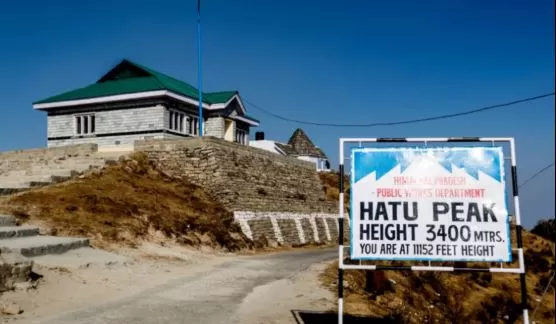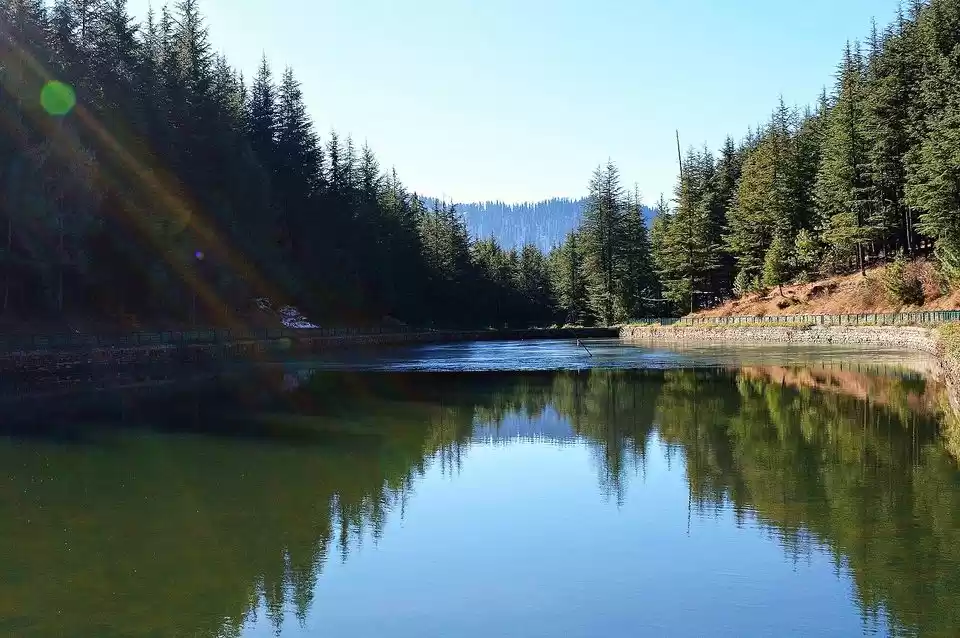Are you looking for a destination that offers stunning views, thrilling adventure, and serene spirituality? If yes, then you should definitely visit Hatu Peak, a hidden gem of Himachal Pradesh that will leave you spellbound. Hatu Peak is the highest peak in the Shimla district, located about 70 km from the capital city.
It is a popular spot for trekking, camping, and sightseeing, as it offers panoramic views of the snow-capped Himalayas, lush green valleys, and colorful orchards. Hatu Peak is also home to a sacred temple dedicated to Goddess Kali, where you can experience the divine presence and peace.
In this article, we will tell you everything you need to know about Hatu Peak, including its history, culture, attractions, activities, and more. Read on to find out why Hatu Peak should be your next travel destination.
Hatu Peak Trek: A Scenic Adventure for Nature Lovers
One of the main attractions of Hatu Peak is the trek that leads to its summit. The Hatu Peak Trek is a moderate level trek that takes about 3 to 4 hours to complete. The trek starts from Narkanda, a small town that is famous for its apple orchards and skiing slopes. From Narkanda, you can either take a taxi or drive your own vehicle to reach the base camp of the trek, which is about 7 km away.
The trek route passes through dense forests of pine, cedar, oak, and rhododendron trees. The trail is well-marked and easy to follow, but it can be steep and slippery at some places. The trek offers breathtaking views of the surrounding mountains, valleys, and meadows. You can also spot various birds and animals along the way, such as eagles, magpies, monkeys, and bears.
The highlight of the trek is reaching the summit of Hatu Peak, which is at an altitude of 3400 meters above sea level. From here, you can enjoy a 360-degree view of the majestic Himalayan ranges, including some of the famous peaks like Nanda Devi, Shrikhand Mahadev, and Rupin Pass. You can also see the Tani Jubbar Lake and the Sutlej River from here. The summit is also where you will find the Hatu Mata Temple, which is a sacred and serene place of worship.
Some tips for the Hatu Peak Trek are:
The best time to visit Hatu Peak Trek is from April to June and from September to November. During these months, the weather is pleasant and clear, and you can see the snow-capped peaks and the blooming flowers.
void visiting during the monsoon season (July to August), as the trail can be muddy and slippery. Also avoid visiting during the winter season (December to March), as the trail can be covered with snow and ice.
Carry enough water and snacks with you, as there are no shops or cafes on the way. You can also carry a packed lunch and enjoy a picnic at the summit.
Wear comfortable shoes and clothes that are suitable for trekking. Also carry a jacket or a sweater, as it can get cold at the summit.
Carry a camera or a binoculars with you, as you will get many opportunities to capture some amazing shots of the scenery and the wildlife.
Respect the nature and do not litter or harm any plants or animals on the way.
Also check out: A Rendezvous with the Land of Pandavas | Narkanda - Hatu Peak
Hatu Mata Temple: A Sacred and Serene Place of Worship
Another attraction of Hatu Peak is the Hatu Mata Temple, which is dedicated to Goddess Kali. The temple is believed to be very old and has a lot of significance for the locals. According to legend, Goddess Kali killed a demon named Mahishasura at this place and saved the world from his tyranny. The temple is also said to be one of the 51 Shakti Peethas (powerful places) where parts of Goddess Sati’s body fell after her self-immolation.

The temple is built in a pagoda style with wooden carvings and stone sculptures. The temple has a main shrine where an idol of Goddess Kali is installed. The idol is adorned with colorful clothes and jewelry. The temple also has a small bell that rings when someone enters or exits the temple. The temple is surrounded by colorful flags that flutter in the wind.
The temple is open from sunrise to sunset and anyone can visit it irrespective of their religion or caste. The temple attracts many pilgrims and devotees who come here to seek blessings and peace from the goddess. The temple also hosts some festivals and fairs throughout the year, such as Navratri (nine nights of worship), Dussehra (victory over evil), and Diwali (festival of lights).
Some facts and trivia about the Hatu Mata Temple are:
The temple is also known as Hatkoti Temple, as it is located at the confluence of two rivers, Hatu and Pabbar.
The temple is also associated with the Pandavas, the heroes of the epic Mahabharata. It is said that they stayed here for some time during their exile and built the temple in honor of Goddess Kali.
The temple is also a popular spot for meditation and yoga, as it offers a calm and serene atmosphere.
You may also like to check out: PARASHAR LAKE, HATU PEAK & MORE
Camping at Hatu Peak: A Memorable Experience Under the Stars
If you want to extend your stay at Hatu Peak and enjoy the night sky, you can opt for camping at Jor Bagh, which is a campsite near Hatu Peak. Camping at Hatu Peak is a memorable experience that will let you connect with nature and yourself. You can book a tent at Jor Bagh, which offers all the basic facilities and amenities, such as beds, blankets, pillows, toilets, showers, electricity, and food. You can also enjoy a bonfire, music, games, and stories at the campsite.

Camping at Hatu Peak offers some amazing views and attractions that you can explore around the campsite. You can witness the spectacular sunrise and sunset from your tent. You can also gaze at the stars and the moon at night. You can also spot some wildlife around the campsite, such as deer, foxes, rabbits, and birds.
Some tips for camping at Hatu Peak are:
The best time to visit camping at Hatu Peak is from April to June and from September to November. During these months, the weather is pleasant and clear, and you can see the stars and the moon. Avoid visiting during the monsoon season (July to August), as the campsite can be wet and muddy. Also avoid visiting during the winter season (December to March), as the campsite can be cold and snowy.
Carry enough warm clothes and accessories with you, as it can get chilly at night. Also carry a flashlight or a torch, as it can get dark at night.
Carry some snacks and drinks with you, as there are no shops or cafes near the campsite. You can also carry some books or games to keep yourself entertained.
Respect the nature and do not litter or harm any plants or animals around the campsite.
How to Reach Hatu Peak
To reach Hatu Peak from Delhi, you have several options depending on your preferred mode of transportation. Here are some of the possible ways to reach Hatu Peak from Delhi:

By air:
You can take a flight from Delhi to Jubbarhatti Airport, which is the nearest airport to Shimla. From there, you can hire a taxi or take a bus to Narkanda, which is about 70 km away from Shimla. From Narkanda, you can either trek, drive, or bike to Hatu Peak, which is about 8 km away from Narkanda.
The flight from Delhi to Jubbarhatti Airport takes about an hour and a half and costs around Rs. 3000-4000. The taxi from Jubbarhatti Airport to Narkanda costs around Rs. 1500-2000. The bus from Shimla to Narkanda costs around Rs. 40-50.
By rail:
You can take a train from Delhi to Kalka, which is the nearest major railway station to Shimla. From Kalka, you can either take a taxi or a bus to Shimla, which is about 90 km away from Kalka. From Shimla, you can follow the same route as mentioned above to reach Narkanda and then Hatu Peak.
Alternatively, you can also take the famous toy train from Kalka to Shimla, which is a scenic and heritage ride that takes about 4 hours. The train from Delhi to Kalka takes about 4-5 hours and costs around Rs. 500-1000. The taxi from Kalka to Shimla costs around Rs. 1000-1500. The bus from Kalka to Shimla costs around Rs. 100-150. The toy train from Kalka to Shimla costs around Rs. 20-300.
By road:
You can drive your own vehicle or take a bus from Delhi to Narkanda via the Shimla-Rampur Highway. The road is in good condition and offers some beautiful views along the way. The distance from Delhi to Narkanda is about 408 km and takes about 9-10 hours to cover. The bus from Delhi to Narkanda costs around Rs. 800-1000.
Places to Visit Near Hatu Peak: A List of Must-See Destinations
If you want to explore more places near Hatu Peak that offer different attractions and experiences for travelers, you can check out these six destinations that are worth visiting:

Tani Jubbar Lake: A tranquil lake surrounded by pine trees and apple orchards. A perfect place for boating, picnicking, and relaxing. The lake is about 10 km from Hatu Peak.
Kacheri Village: A quaint village that showcases the traditional lifestyle and culture of Himachal Pradesh. A great place to interact with locals, learn about their customs, and buy handicrafts. The village is about 15 km from Hatu Peak.
Mahamaya Temple: A ancient temple dedicated to Goddess Durga. A sacred place for pilgrims and devotees who seek blessings and peace. The temple is about 20 km from Hatu Peak.
Stokes Farm: A sprawling farm that produces apples, apricots, plums, pears, cherries, and more. A fascinating place to learn about horticulture and taste fresh fruits. The farm is about 25 km from Hatu Peak.

Jalori Pass: A high-altitude pass that connects Shimla and Kullu districts. A scenic place for biking, hiking, and sightseeing. The pass is about 30 km from Hatu Peak.
Tirthan Valley: A pristine valley that lies along the Tirthan River. A paradise for nature lovers who enjoy fishing, birdwatching, trekking, and camping. The valley is about 40 km from Hatu Peak.
Hatu Peak is a hidden gem of Himachal Pradesh that offers stunning views, thrilling adventure, and serene spirituality. It is a destination that will satisfy your wanderlust and make you fall in love with nature. Whether you are looking for a trekking challenge, a camping adventure, or a spiritual retreat, Hatu Peak has something for everyone.
So what are you waiting for? Book your trip to Hatu Peak with Tripoto today and get ready for an unforgettable experience. You can also share your feedback or questions with us in the comments section below or contact us for any queries or suggestions.
We would love to hear from you. And don’t forget to explore more content on our website for more travel inspiration.










































